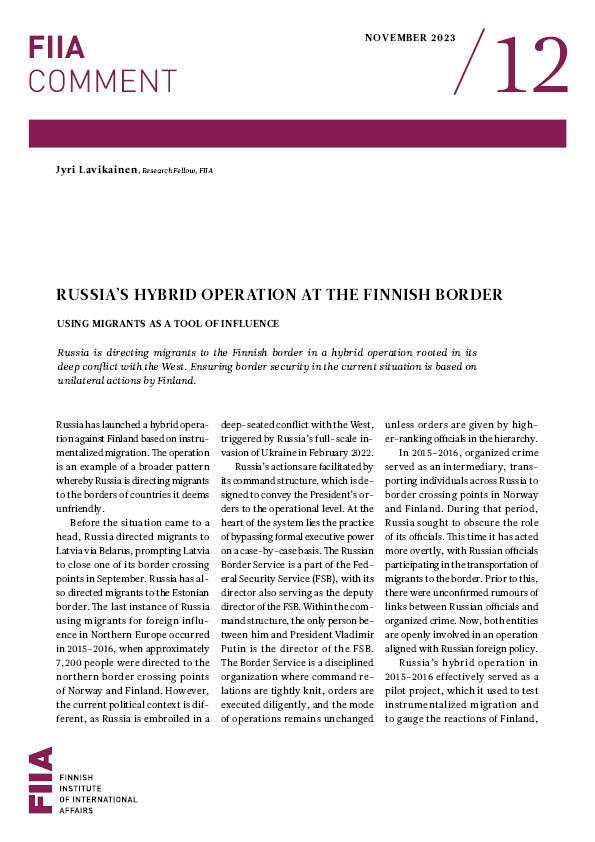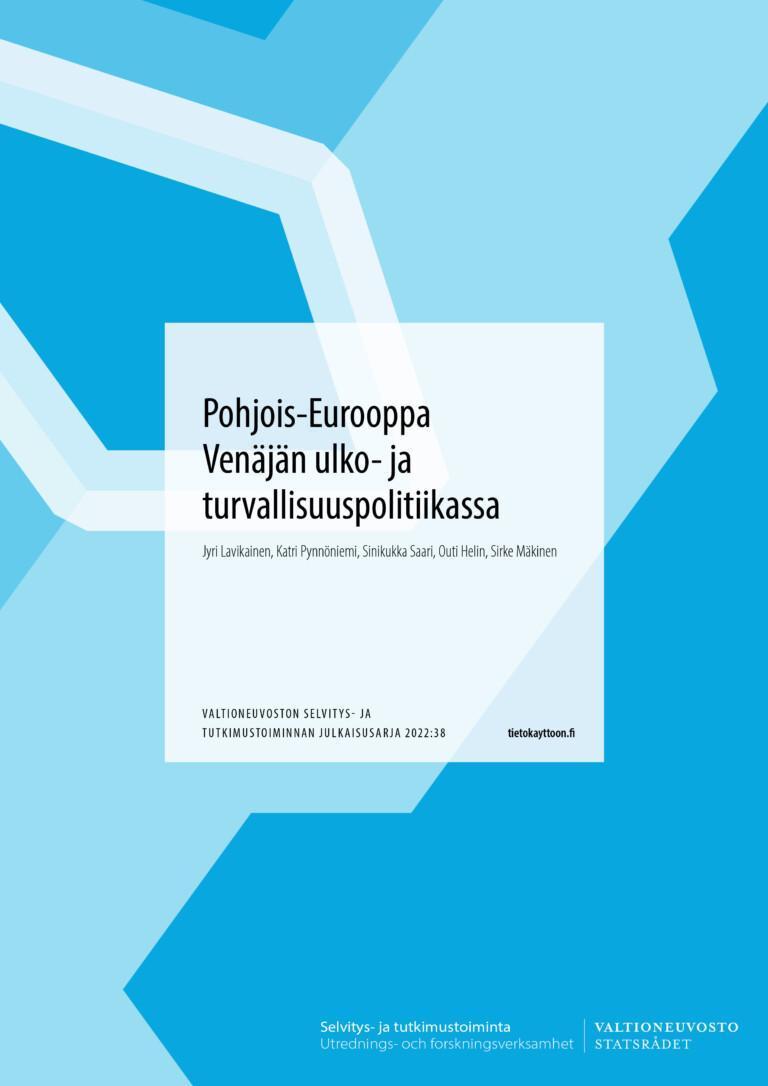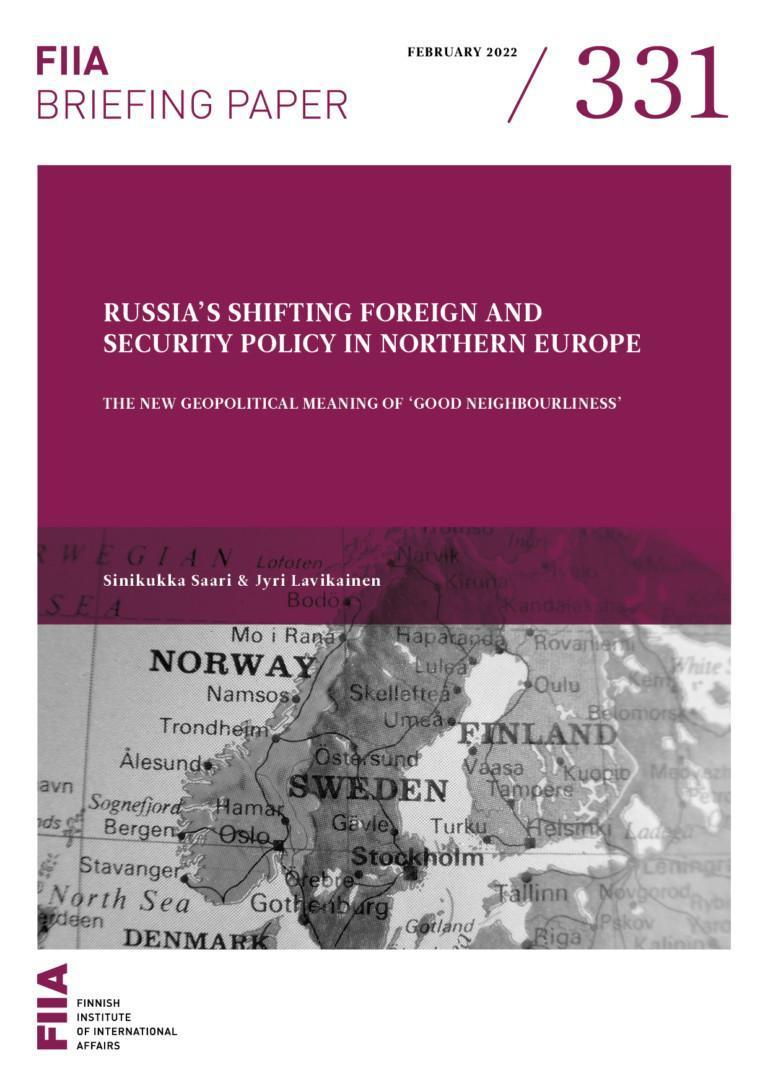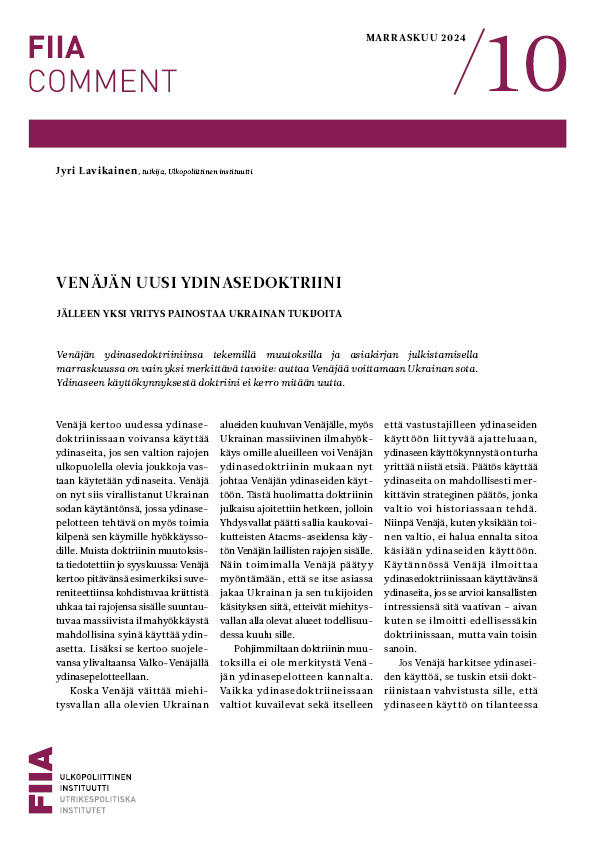Russia is directing migrants to the Finnish border in a hybrid operation rooted in its deep conflict with the West. Ensuring border security in the current situation is based on unilateral actions by Finland.
Russia has launched a hybrid operation against Finland based on instrumentalized migration. The operation is an example of a broader pattern whereby Russia is directing migrants to the borders of countries it deems unfriendly.
Before the situation came to a head, Russia directed migrants to Latvia via Belarus, prompting Latvia to close one of its border crossing points in September. Russia has also directed migrants to the Estonian border. The last instance of Russia using migrants for foreign influence in Northern Europe occurred in 2015–2016, when approximately 7,200 people were directed to the northern border crossing points of Norway and Finland. However, the current political context is different, as Russia is embroiled in a deep-seated conflict with the West, triggered by Russia’s full-scale invasion of Ukraine in February 2022.
Russia’s actions are facilitated by its command structure, which is designed to convey the President’s orders to the operational level. At the heart of the system lies the practice of bypassing formal executive power on a case-by-case basis. The Russian Border Service is a part of the Federal Security Service (FSB), with its director also serving as the deputy director of the FSB. Within the command structure, the only person between him and President Vladimir Putin is the director of the FSB. The Border Service is a disciplined organization where command relations are tightly knit, orders are executed diligently, and the mode of operations remains unchanged unless orders are given by higher-ranking officials in the hierarchy.
In 2015–2016, organized crime served as an intermediary, transporting individuals across Russia to border crossing points in Norway and Finland. During that period, Russia sought to obscure the role of its officials. This time it has acted more overtly, with Russian officials participating in the transportation of migrants to the border. Prior to this, there were unconfirmed rumours of links between Russian officials and organized crime. Now, both entities are openly involved in an operation aligned with Russian foreign policy.
Russia’s hybrid operation in 2015–2016 effectively served as a pilot project, which it used to test instrumentalized migration and to gauge the reactions of Finland, Norway, and the EU. The backdrop to these events was the occupation of Crimea, which marked the start of the war in Ukraine in 2014 and led Norway, Finland and other EU countries to impose sanctions on Russia and to limit their cooperation with the country. Despite the sanctions, Russia maintained functional relations with both Finland and Norway during this period. At the time, Russia could feasibly have sought to intimidate both countries into restoring bilateral relations. Indeed, Russia managed to get Finland to agree to a bilateral border agreement, instead of handling the matter through the EU.
This time, the context is Russia’s full-scale invasion of Ukraine, which has resulted in a long-running open conflict between Russia and the West. Russia has officially labelled Finland as an unfriendly country, which inevitably alters Russia’s motives compared to the events that unfolded eight years ago. At the current time, bilateral negotiations, putting a stop to the support for Ukraine, or advancing common economic projects are not realistic objectives for Russia. Furthermore, the 2015–2016 operation is not the only instance of Russia utilizing weaponized migration; the Belarusian intelligence services have been organizing migrant transportations to the EU’s eastern border since 2021. The Belarusian operation was launched as Russia was preparing to attack Ukraine, with Russia being a transit country.
In this new situation, Finland is in the same boat as Poland and the Baltic states, towards which Russia has been hostile for years. As a result, Russia has less reason to stop the operation than in 2016, although it can always choose to do so or to redirect the migrants to other countries, such as Norway.
Based on previous operations, it can be assumed that Russia has the capability to direct thousands of migrants to the Finnish or Norwegian borders throughout the winter. Russian missions abroad can grant visas to those who want them, and Russia can deport foreign nationals residing within its borders, as it did in 2015–2016. Back then, Russia hinted that there are millions of people that it can direct to the border if it so wishes. However, it is unrealistic to expect that it could accomplish such a task at speed. The larger the group of people, the more challenging it becomes for Russian officials to manage the migrant movement, both in terms of logistics and infrastructure. Instrumentalized migration always carries a risk: if crossing the border proves impossible, the migrants will remain on the Russian side. If the border stays open, the operation can proceed in a controlled manner.
This time, the Russian operation is not only about testing weaponized migration, but also about wielding it. Finland must manage the situation before it escalates, which explains the swift decision to close border crossing points. Employing strategic communication to convey that the border is closed can reduce the migrants’ willingness to leave their countries of origin.
The response to all forms of hostile action is based on resilience, defence, and deterrence. In terms of resilience, effective measures by authorities and sustained situational awareness are crucial. Closing the border as a defensive action prevents Russian officials from deporting foreign nationals from its territory in a controlled manner. At the same time, this allows Finland to increase the likelihood that Russia’s hybrid operation will prove ineffective. The final option is deterrence – asymmetric countermeasures against Russia. This can be achieved nationally, for example by offering tailor-made support for Ukraine, or with allies, for example by employing cyberattacks or tighter economic sanctions.





